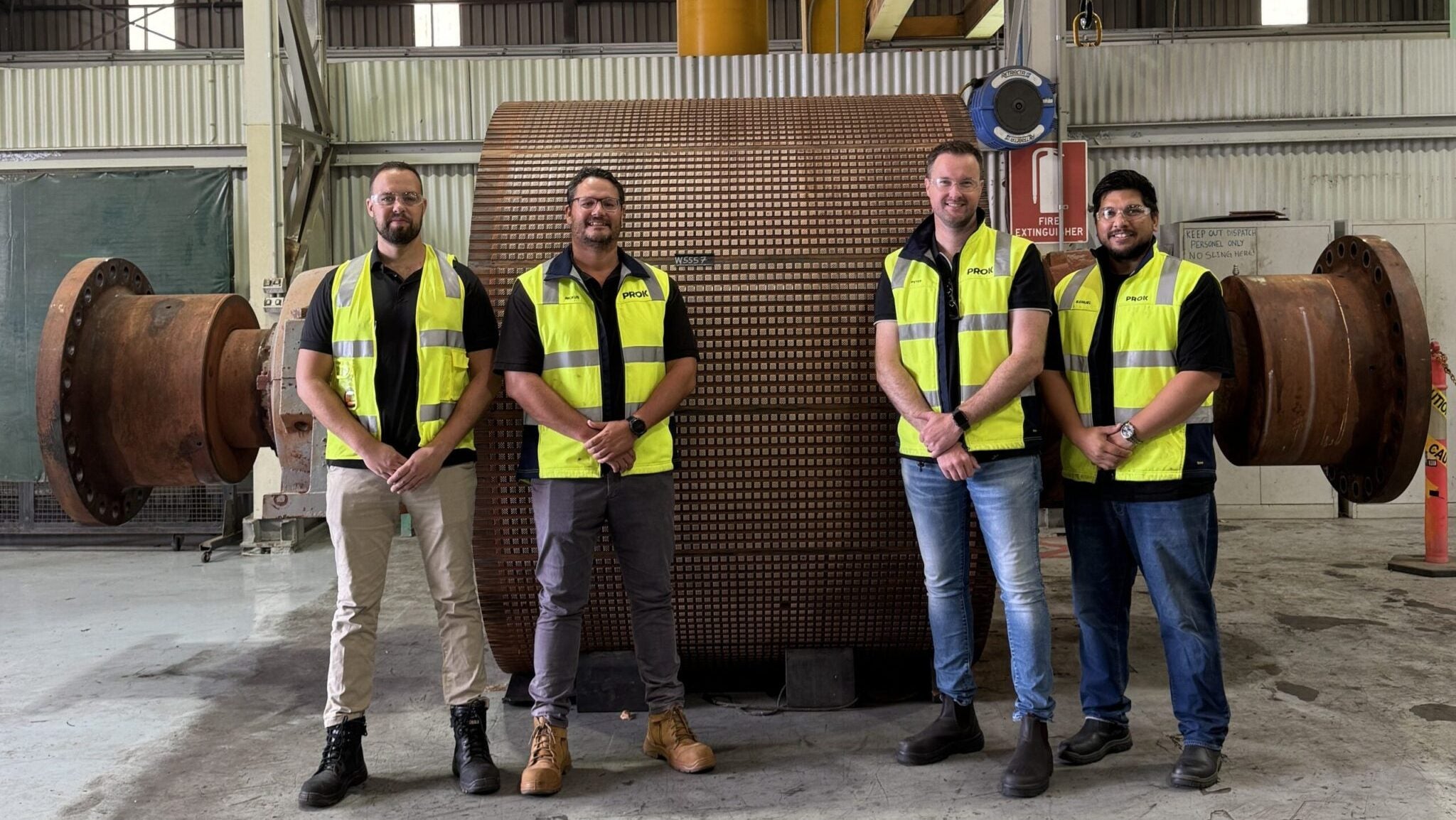
At BHP’s Jimblebar iron ore operation in Western Australia, a 35-tonne dual-drive pulley on the main overland conveyor had been in service since 2013 — until it failed suddenly just before Christmas. After nearly twelve years of reliable performance, the maintenance team installed a rotable unit to get the conveyor running, then faced a key decision: buy new or rebuild the existing pulley. Following a detailed strip and assessment, the team opted for a full refurbishment, confident it would restore the pulley to like-new condition and deliver another full service life.
From long service to sudden failure
The failed pulley had already exceeded expectations. Operating in the harsh Pilbara climate, twelve years of continuous duty was well above the industry average. “12 years is phenomenal in those conditions,” says PROK Mechanical Engineer David Breunig. “It’s a testament to the maintenance practices on site and the original PROK design.” Typically, pulleys of this kind undergo maintenance every three to five years unless extreme conditions accelerate wear.
Diagnosis and teardown
Warning signs appeared gradually. Conveyor vibration readings rose slowly at first, then escalated rapidly. “Then all of a sudden it started to exponentially increase in vibration and they saw the excessive heat on the bearing housing,” recalls Brendan Siebel, PROK Account Manager. Temperature readings hit 170°C, signalling imminent failure. Thanks to the site’s monitoring system, the team acted quickly to replace the pulley.
The 35-tonne unit was transported to PROK’s Perth workshop for a full teardown. Mechanical fitters, supported by refurbishment engineers, disassembled every component to inspect wear on housings, shaft, and shell. BHP reliability engineers observed to pinpoint the root cause and evaluate wear patterns. Inspection revealed extensive bearing damage, housing deterioration, and a seized coupling that required cutting the shaft to remove.
Recommendations: cost-effective refurbishment and upgrades
Based on the assessment, PROK developed a repair strategy that reused serviceable parts and upgraded key components for longer life:
- Bearings – Retained the original open bearing design, proven to last over a decade in Jimblebar’s clean conditions. “It’s a credit to the site that their conveyor hygiene in that area is so good,” says Brendan.
- Shell – Structurally sound; only surface preparation before new lagging was needed. Bore tolerances confirmed within specification.
- Lagging – Replaced cold-bonded lagging with hot-vulcanised ceramic dimpled lagging for heavy-duty performance. “Hot vulcanisation increases bond strength and seals the shell-lagging interface to eliminate contamination failures,” explains Rickus Strauss, PROK Pulley Refurbishment Manager.
- Corrosion protection – Polyurethane coatings applied to locking elements and end discs for corrosion resistance.
- Shaft and couplings – New shaft machined due to seized coupling; coupling components re-bored and reused where possible.
- Transport cradle – Specialised cradle inspected, tested, and refurbished for safe transport.
The result: restored to OEM standards
The refurbishment returned the pulley to full OEM specifications at a fraction of the cost of a new unit. PROK engineers anticipate another 12 years of service, exceeding BHP’s 60,000-hour operational benchmark and the industry’s typical three-to-five-year repair cycle.
“As an OEM, we take the full process seriously,” says Rickus. “What the customer gets back is valid as a new pulley. Even though it’s a refurb, it performs with the same expected lifetime as if we were building from scratch.”
The rebuilt pulley underwent the same quality testing and certification as a new product and was shipped back to site a month ahead of BHP’s scheduled shutdown. For BHP, the rebuild delivered significant cost savings and ensured a critical asset was ready for installation well before the next maintenance window.

